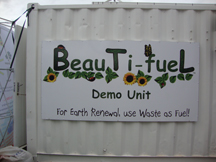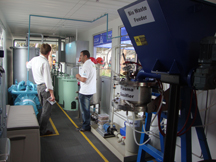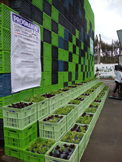

COP-17 Afterthoughts
23 December 2011 --- Going through leftover COP-17 materials I find I have more to say that I didn't get to in the rush of the Conference.
Proposed New Sources of Funds for Climate Change Responses
One big issue at COP-17 is how to fill up the Green Climate Fund in an era of financial downturns and uncertainties. Two new sources of funds were being discussed at COP-17.
International shipping by sea and air, as well as international passenger travel by air produces a considerable amount of carbon emissions that is not assigned to a particular country. This includes considerable opportunities both for conservation by introducing efficiency measures and as a tax source of funding for the Green Climate Fund. The word "bunker" is associated with this industry.
Another source of new funds that could provide considerable amounts is a proposed tax on financial transactions (FTT). It is also dubbed the "Robin Hood Tax" because it would indeed be an wealth redistribution. A "tiny tax" on all financial transactions is proposed. A European Parliament report indicates that a low level tax of 0.05 percent could raise 200 billion Euros a year and US$ 650 billion a year if implemented at a global level. The European Union is discussing an FTT proposal now.
The FTT should be instituted internationally to avoid brokerages running to no-tax haven countries, as happens with offshore banking. This would be one way the U.S. could contribute that would have a minimal effect upon business.
Innovation Techniques for Reduced Emissions
The exhibition of methods for reducing carbon emissions from South Africa was quite impressive. The University of the Witwatersrand in Johannesburg has a Centre of Material and Process Synthesis that displayed the Fischer-Tropsch Technology (FT). The process is to convert solid fuels such as municipal waste or livestock waste into "synthesis gas" which is cleaned to remove sulphur and other impurities. Using FT catalysts, the synthesis gas (carbon monoxide and hydrogen) is converted into hydrocarbons and steam. The process produces a variety of products, such as ammonia, Diesel, gasoline, and methanol, which are separated. The remaining gas can be used to generate electricity. The process is scalable, so it is applicable to farms. A farmer can put manure from his livestock into the FT system and get fertilizer, Diesel, and electricity to run his farm, making cyclical production possible. Depending upon the size of the operation, I was told a farmer could pay for the equipment in two to six months. Since everything is reuses, the only carbon emissions are from the use of the Diesel fuel in the tractors.


Innovative Structures Using Recycled Materials
Cape Town has some interesting structural methods using recycled materials. The exhibit in Durban was built with drink crates containing plastic bottles planted with flowers or colorful foliage. Around the waterfront in Cape Town are a number of these plant walls.
